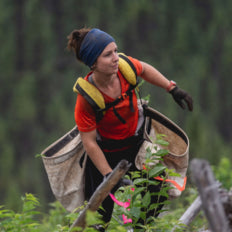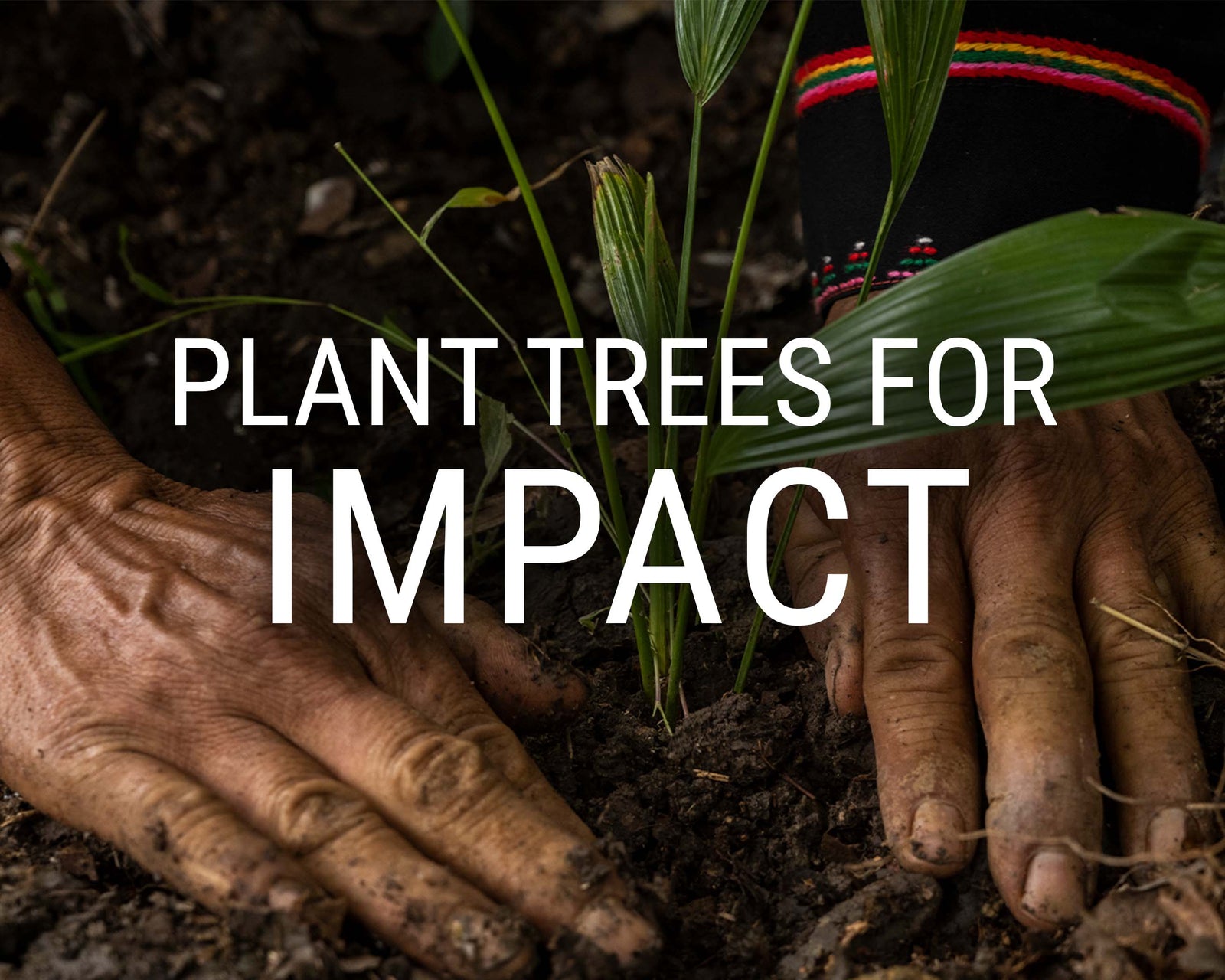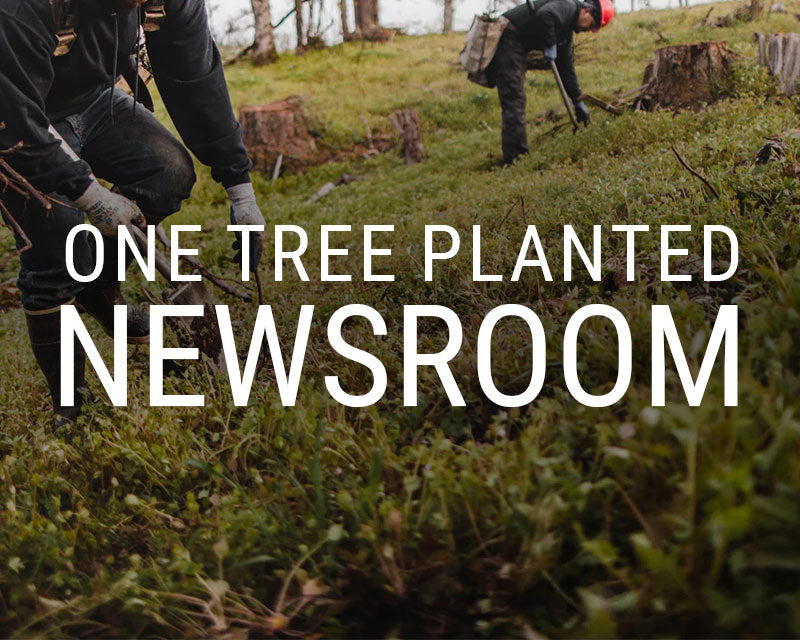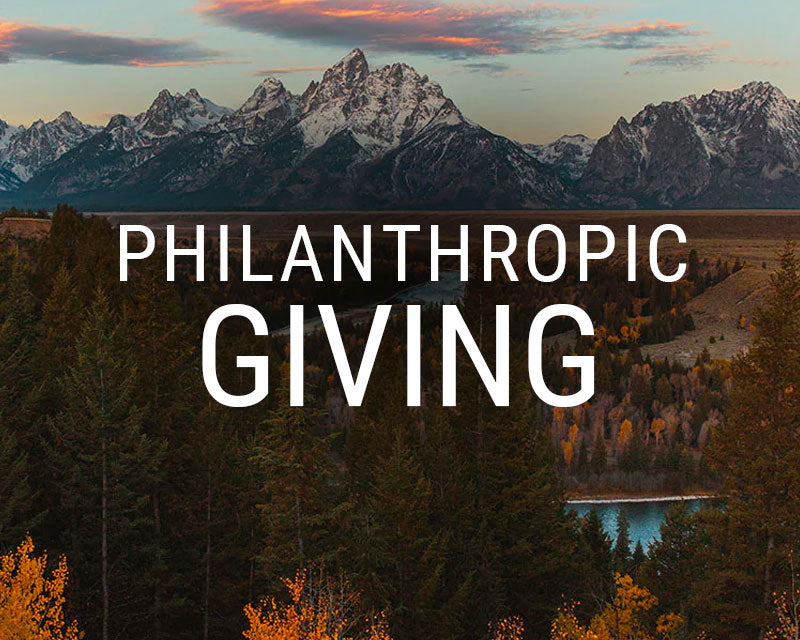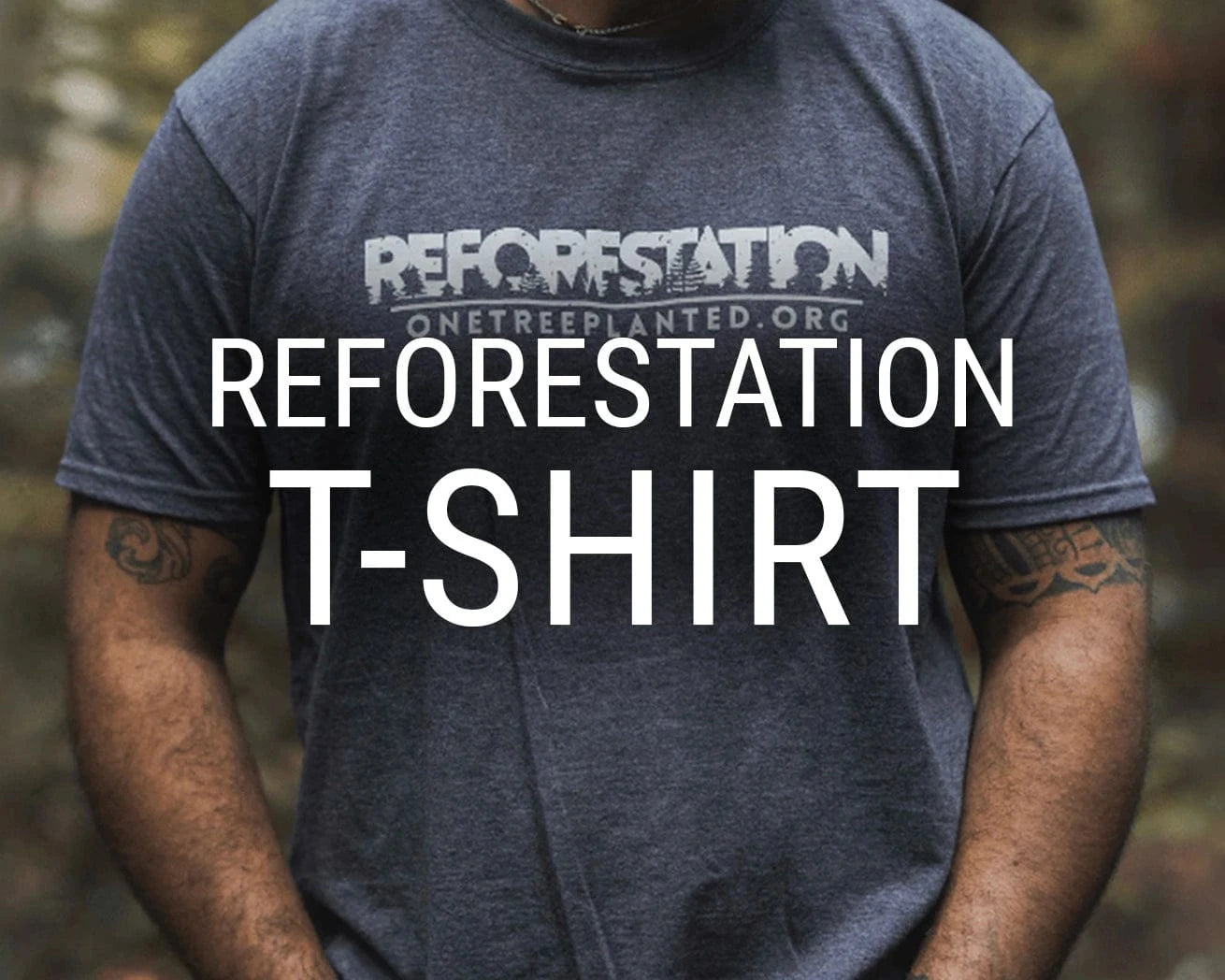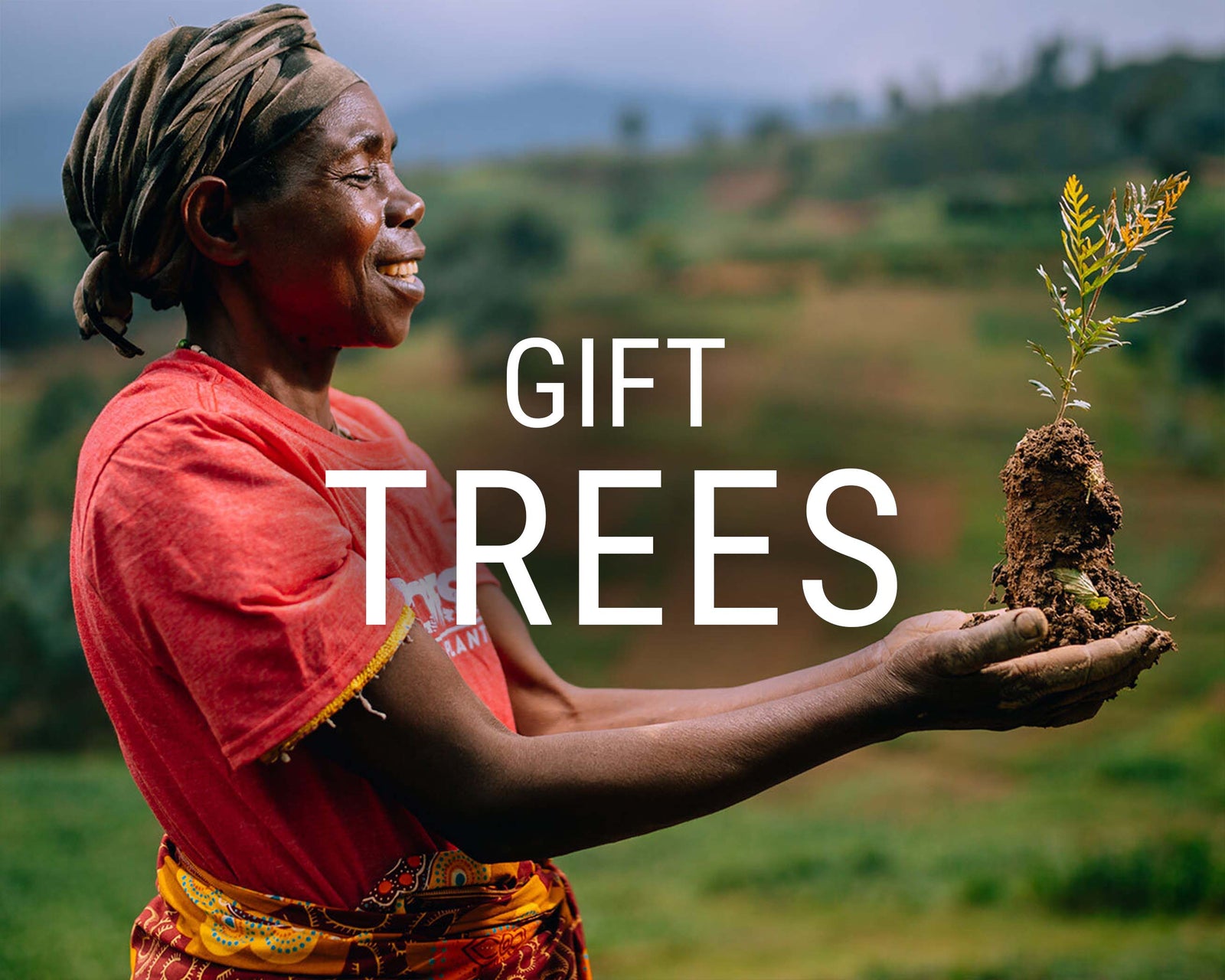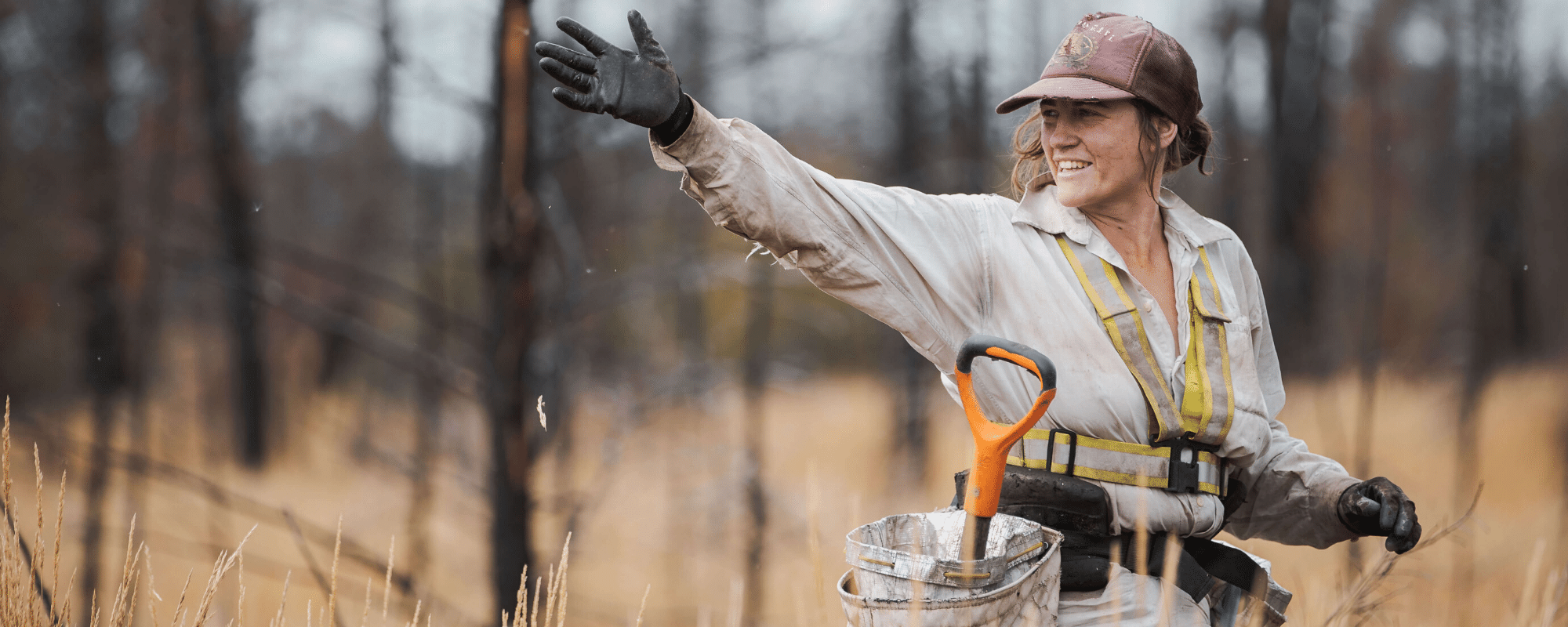
Interested in finding out how your company can incorporate some key SDGs?
We've got you covered.
GET IN TOUCHThe 17 UN Sustainable Development Goals (SDGs) are a plan to create a better and more sustainable future for all. Established by the United Nations, the SDGs are an urgent call to action and global partnership among all countries. They represent key benchmarks to addressing poverty, inequality, and climate change, and establishing peace and justice. Reforestation and land restoration help to benefit all 17 SDGs.
Businesses can help address the environmental, social, and economic targets of the SDGs - and it doesn't have to be complicated. With increasing consumer interest in sustainable brands, you'll have plenty to gain.
Interested in finding out how your company can incorporate some key SDGs? We've got you covered.
Goal #1 recognizes that poverty is a multi-dimensional issue, with factors ranging from unemployment to social exclusion, vulnerability to natural disasters, susceptibility to disease vectors, and more.
These factors prevent people from being productive members of society, but growing inequality doesn't just hurt individuals. It also impedes economic growth and undermines social cohesion, increasing political and social tensions and, in some cases, driving instability and conflict.
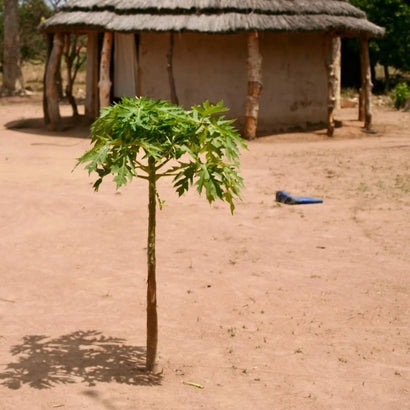
UGANDA NO POVERTY PROJECT
Participants in The International Small Group and Tree Planting Program (TIST) plant trees for many reasons. These range from increased economic stability via forest products to environmental benefits on their farms. In addition, the TIST program generates and sells carbon offsets, returning 70% of the profits directly to the farmers.
We're proud to state that each farmer involved in the Uganda project receives an average of $3,000 in benefits in the form of fruits, nuts, medicine, apiculture, increased crop yields, and access to cookstoves, fodder, and fuelwood.
Goal #2 targets the hunger crisis, giving special attention to how food is grown, shared, and consumed. If done right, agriculture, forestry and fisheries can provide nutritious food for everyone, generate sustainable income, support people-centered rural development, and protect the environment. Investments in agriculture are crucial to increasing productivity and supporting the sustainable food systems necessary to alleviate hunger worldwide.
GHANA ZERO HUNGER PROJECT
This project, which was funded by USAID and implemented by the USFS-IP, ran from 2013-October 2018 and involved tree planting on Cocoa farms and in secondary forests. When the trees reach maturity, the farmers involved will be able to sell products like fruits, spices, and traditional medicines.
Participants will also be mobilized to plant trees in their communities. School compounds, roadsides, recreational areas, and community facilities will benefit from positive impacts like beautification and carbon sequestration.
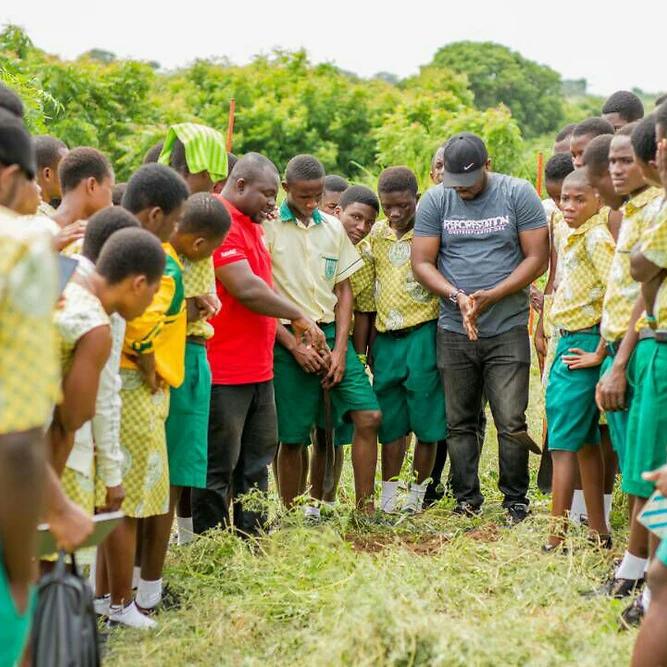
Goal #3 aims to increase health and well-being for people of all ages. By providing more efficient funding to health systems, improving sanitation and hygiene, increasing access to physicians, and reducing ambient pollution, significant progress is expected to be made—saving the lives of millions.
Huge strides have already been made towards increasing life expectancy and reducing child and maternal mortality, but achieving the SDG target of less than 70 maternal deaths per 100,000 live births by 2030 will require significant improvements in skilled delivery and care.
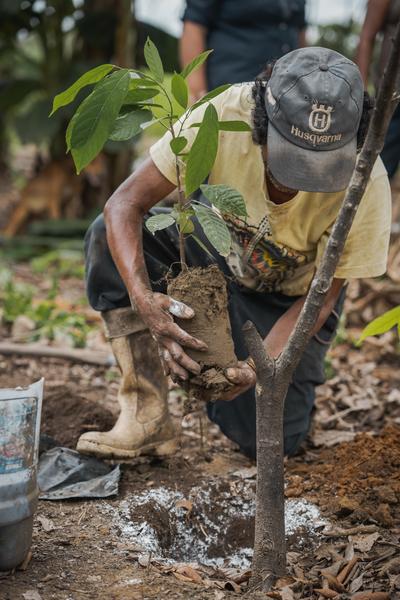
PERU GOOD HEALTH & WELL-BEING PROJECT
Our reforestation project in Peru focuses on deforested and degraded areas in the forests of the native communities Callería, Patria Nueva and Nuevo Saposoa. Thanks to the active participation of community members and the indigenous organization FECONADIC, we're working to support good health and well-being by planting trees native to the Amazon Rainforest.
With an anticipated planting of 150,000 trees in 2020, this Peruvian reforestation project will sequester approximately 22lbs of carbon per tree each year.
One of the trees included in this project is the Mulateiro. This canopy tree grows tall and straight, reaching up to 30 meters high! In traditional herbal medicine, Mulateiro bark is decocted and used to treat infected wounds, eye infections, skin spots, wrinkles, and scars.
Goal #4 recognizes that increasing the availability of high-quality education is essential to promoting sustainable development. While a good education improves quality of life, it can also help equip locals with the tools they need to develop innovative solutions to the world's greatest problems.
Over 265 million children are currently out of school. 22% of them are between the ages of 4 and 11. And often, even the children that make it to school miss out on the basic literacy and math skills they need to thrive. Still, major progress has been made towards increasing access to education in the last decade. This has resulted in higher enrollment rates, particularly for women and girls.
THE IMPORTANCE OF QUALITY EDUCATION
- While enrollment in primary education in developing countries has reached 91%, 57 million children between the ages of 4 and 11 have still not made it to the classroom.
- More than half of these children live in Sub-Saharan Africa.
- And an estimated 50% of them live in conflict-affected areas.
- 617 million youth worldwide lack basic literacy and math skills, despite many being in school.
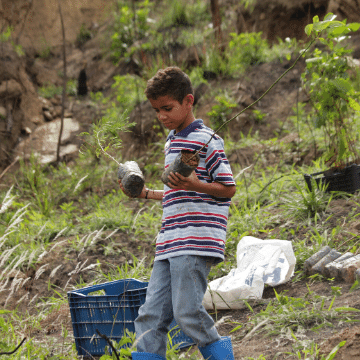
Gender equality is not only a fundamental human right, it's a necessary foundation for building a peaceful, prosperous and sustainable world. Today, 1 in 5 women and girls between the ages of 15-49 have reported experiencing physical or sexual violence from an intimate partner within a 12-month period. Despite this, 49 countries still lack the laws necessary to protect protect them from domestic violence.
Providing women and girls with equal access to education, health care, decent work, and fair representation during political and economic decision-making will fuel sustainable economies, change societies, and benefit all of humanity. Implementing new legal frameworks for female equality in the workplace and eradicating the many harmful practices targeted at women is crucial to ending the gender-based discrimination prevalent in many countries around the world.
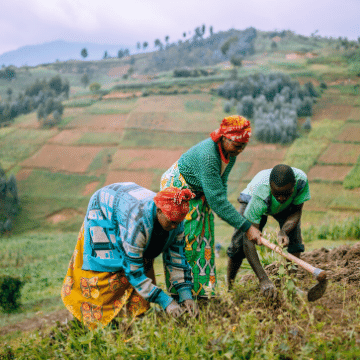
RWANDA GENDER EQUALITY PROJECT
The primary goal of this project is to provide coffee seedlings that will be planted and grown into healthy coffee trees that create steady income, enabling approximately 300 coffee farmers to secure health care and education for themselves and their families.
Kula Project, in partnership with communities and aided by volunteer labor, plans to build seedling nurseries in three regions of Rwanda. Each nursery will house and cultivate approximately 33,000 coffee tree seedlings, resulting in 100,000 coffee trees planted.
In 2015, 29% of the world's population lacked safe drinking water, and more than 60% lacked adequate sanitation services. Goal #6 aims to secure universal and equitable access to safe drinking water everywhere. Though other measures are needed to safely manage water supplies, trees play a vital role in making clean drinking water accessible to everyone.
OREGON CLEAN WATER AND SANITATION PROJECT
Oregon is home to over 35 native tree species, including the iconic Douglas Fir, Oregon White Oak, Ponderosa Pine, Western Red Cedar, Pacific Willow, and Oregon Ash. Despite this, they have lost an estimated 522,000 acres of forest cover since 2000. We're working with local partners to ensure that degraded forests are restored and full ecosystems are supported--from soil to waterways to insects, birds, mammals, and people. Healthy forests provide an important source of clean water to Salmon and other sensitive species.
Our Oregon project repairs native riparian habitat and plays a vital role in water quality improvement. This will support drinking water source protection and improve infiltration to groundwater to recharge city wells.
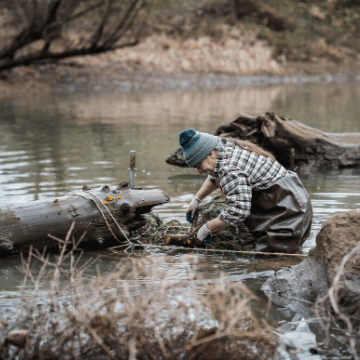
Energy is at the center of nearly every major challenge and opportunity the world faces today. From jobs to security to climate change, food production and increased income, equitable access to energy is essential. Intertwining with several other Sustainable Development Goals, achieving affordable and clean energy is paramount.
Focusing on universal access to energy, increasing energy efficiency, and full integration of renewable energy technologies via economic and job opportunities is crucial to creating more sustainable and inclusive communities, thus increasing resilience in the face of Climate Change.
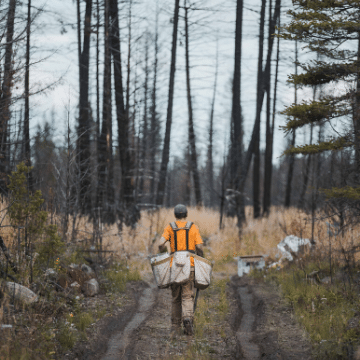
THE IMPORTANCE OF AFFORDABLE AND CLEAN ENERGY
- 13% of the global population still lacks access to modern electricity.
- 3 billion people still rely on wood, coal, charcoal and animal waste for cooking and heating.
- Energy is the dominant contributor to Climate Change, accounting for approximately 60% of total global GHG emissions.
- Indoor air pollution from using combustible fuels for household energy caused 4.3 million deaths in 2012. 6 out of 10 of those that died were women and girls.
Goal#8 targets the roughly 50% of the world’s population that still lives on only $2 a day. With global unemployment rates at 5.7%, having a job no longer guarantees upward mobility or the ability to escape from poverty. This slow and uneven progress requires us to rethink and retool the economic and social policies we've developed in the past.
For truly sustainable economic growth, societies must create quality jobs that stimulate the economy without harming the environment. And to be truly equitable, these opportunities should be available to the entire working population. As prosperity increases, people will need access to financial services to help them manage their incomes, accumulate assets, and make productive investments. And developing the infrastructure necessary for trade, banking and agriculture will help to reduce unemployment levels and increase productivity in the world’s most impoverished regions.
HAITI DECENT WORK AND ECONOMIC GROWTH PROJECT
In Haiti, we promote an agroforestry approach, in which multi-cropped fruit and forest trees are co-managed with the standard subsistence and cash crops farmers depend on. This approach helps to diversify the revenues of smallholders and family farmers, while ensuring that they will have access to short-term income while the trees grow and develop. We also promote sustainable woodlot management; for better or for worse, Haiti currently depends on fuelwood. Until that changes, we promote rapid growing species that can be sustainably harvested and have a high heat value to improve the efficiency of charcoal production.
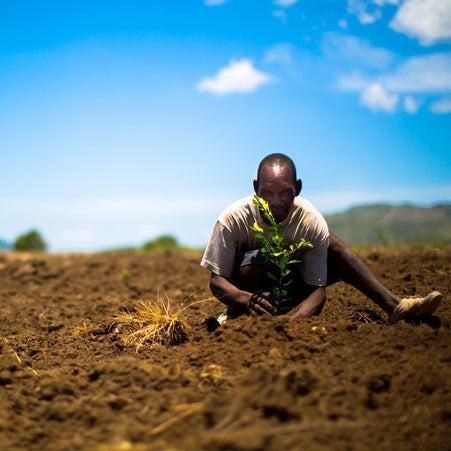
It has long been recognized that improvements in infrastructure are a necessary precursor to increasing productivity through better work, higher incomes, and improved health and educational outcomes. Goal #9 aims to increase investments in infrastructure worldwide–from transportation and irrigation to energy, IT, and communication technology. These developments will play a crucial role in empowering communities and encouraging sustainable development.
Technological progress is integral to the success of achieving key environmental objectives like increased resource and energy-efficiency. Without technology and innovation, industrialization will not happen, and without industrialization, development will not happen. Therefore, there need to be more investments in high-tech products that increase efficiency in manufacturing and more focus on developing reliable mobile cellular services to increase connection and access.
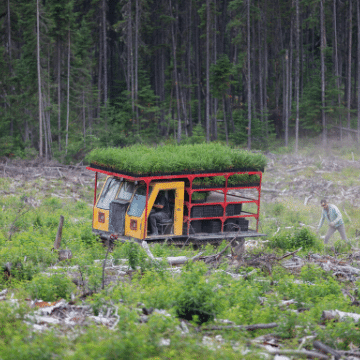
THE IMPORTANCE OF INDUSTRY, INNOVATION AND INFRASTRUCTURE
- 16% of the global population does not have access to mobile broadband networks.
- Industrialization has a job multiplication effect, which ripples through society. In example, every manufacturing job creates 2.2 additional jobs in other sectors.
- Basic infrastructure like roads, IT, communication technologies, sanitation, electrical power, and clean water are still not available in many developing countries.
The international community has made huge strides towards lifting people out of poverty. The most vulnerable nations – those that are the least developed, are landlocked, and/or are small islands – continue to make inroads into alleviating extreme poverty. However, inequality persists, thanks to large disparities in access to healthcare, education, and other essential services.
To reduce inequality, policies should be universal in principle, while paying special attention to the needs of disadvantaged and marginalized populations. In addition to increasing the IMF voting power of developing countries, we need to continue to favor exports from them, granting duty-free treatment to more of their goods. Finally, technological innovations should be made available to migrant workers so that the costs they incur while transferring money are reduced.
THE IMPORTANCE OF REDUCED INEQUALITIES
- In 2016, over 64.4% of products exported by the least developed countries faced zero tariffs, representing a 20% increase from 2010.
- Evidence gathered in developing countries shows that children in the poorest 20% quintiles are still 3x more likely to die before their fifth birthday than children in the richest ones.
- Up to 30% of income inequality is due to inequality within households, especially between women and men. And women are more likely than men to live at 50% below median income.
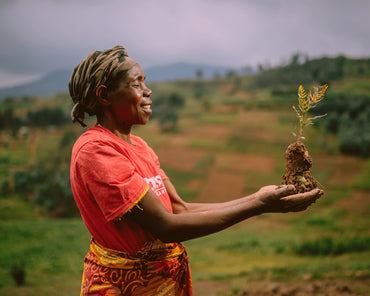
Goal#11 recognizes that cities are vital hubs for ideas, commerce, culture, science, productivity, social development, and more. At their best, cities enable people to advance socially and economically in ways that would not be possible in more rural areas. Because the number of city dwellers is projected to rise to 5 billion by 2030, it’s essential to ensure that efficient urban planning and management practices are in place to deal with the unique challenges carried by urbanization.
Efforts to manage cities in ways that balance job creation and prosperity with the responsible management of land and resources encounter many challenges. Some of these challenges are traffic congestion, inability to provide basic services due to insufficient funds, housing shortages, decaying infrastructure, and rising air pollution.
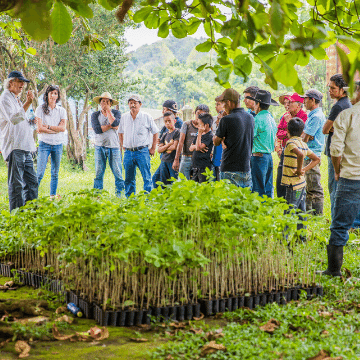
THE IMPORTANCE OF SUSTAINABLE CITIES AND COMMUNITIES
- Over the next few decades, 95% of urban expansion will occur in the developing world.
- Half of humanity – 3.5 billion people – lives in cities today, and that number is expected to increase to 5 billion by 2030.
- Rapid urbanization depletes fresh water supplies, taxes sewage systems, exerts pressure on the living environment, and jeopardizes public health.
- Cities occupy just 3% of the land on Earth, but are responsible for 60-80% of energy consumed and 75% of global carbon emissions.
If we wish to make production and consumption more sustainable, we need to promote resource and energy efficiency, develop sustainable infrastructure, provide access to basic services, and create decent, green jobs. Implementing all of these will help to reduce poverty, make development plans a reality, reduce future economic, environmental and social costs, and strengthen economic competitiveness.
Because sustainable consumption and production aims to “do more and better with less,” welfare will increase thanks to reduced resource use, reduced degradation, and reduced pollution from economic activities.
THE IMPORTANCE OF RESPONSIBLE CONSUMPTION AND PRODUCTION
- Land degradation, declining soil fertility, unsustainable water use, overfishing, and the degradation of marine environments culminate to reduce the planet's ability to supply food.
- The food sector accounts for around 30% of the world’s total energy consumption and around 22% of total GHG emissions.
- Households consume 29% of global energy and are responsible for 21% of CO2 emissions.
- If everyone switched to energy efficient lightbulbs, the world would net $120 billion in savings on utility costs annually.
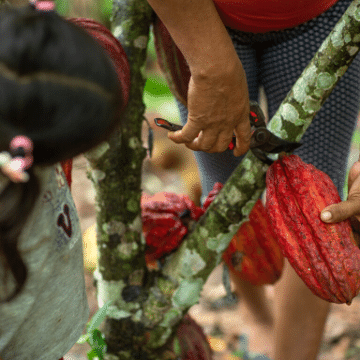
Climate change is now impacting every country on every continent, disrupting national economies and derailing lives. These effects, which cost people, communities and countries dearly, will continue to multiply if left unchecked. Weather patterns are shifting, sea levels are rising, extreme weather events are occurring more frequently, and greenhouse gas emissions are at a historical high. Without action, the world’s average surface temperature is likely to surpass 3 degrees centigrade before the end of this century. The poorest and most vulnerable populations will bear the brunt of this.
To strengthen the global response to the threat of climate change, a coalition of countries adopted the Paris Agreement at the COP21 in Paris, which went into effect in November of 2016. In the agreement, each country agreed to work to keep global temperature rise below 2 degrees centigrade. As of April 2018, 175 parties had ratified the Paris Agreement and 10 developing countries had submitted the first iteration of national adaptation plans.
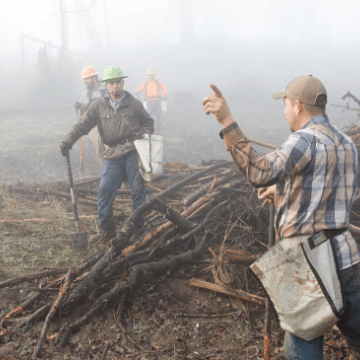
CALIFORNIA CLIMATE CHANGE PROJECT
The California Cove Forest Fire restoration project aims to accelerate the development of native forest habitat in suitable portions of the East Side Pine landscape deforested by the fire. Timing is crucial to get these native species established before they're outcompeted by invasive species. Restoration activities are focused on areas where the vegetation burn severity was high to very high. Wildlife species affected by the Cove fire include the Northern Goshawk, the Black-Backed Woodpecker, the Modoc Sucker and the California Spotted Owl. Also affected is the habitat of the California Black Oak.
The world’s oceans – their temperature, chemistry, currents, and life – drive the global systems that make Earth habitable. Our rainwater, drinking water, weather, climate, coastlines, much of our food, and even the oxygen in the air we breathe, are all ultimately provided and regulated by them. And throughout history, oceans and seas have provided vital conduits for trade and transportation, enabling human exploration and the expansion of societies.
Marine Protected Areas need to be well-funded, effectively managed, and protected by governmental bodies with the muscle to establish and enforce regulations to reduce overfishing, marine pollution and ocean acidification.
ENDANGERED ORCA WHALE PROJECT
The Endangered Southern Resident Orca have called the stretch of Pacific Ocean ranging from Northern California to British Columbia home for millennia. Every year, as the Orcas migrate from North to South and back again, 80% of their diet comes from West Coast Chinook Salmon. However, Salmon stocks are diminishing thanks to habitat loss and increasing pollution. This, of course, negatively impacts the Orca population downstream. Planting trees along the rivers and streams of the Pacific Northwest restores Salmon habitat and, downstream, stabilizes Orca populations. These trees also help to reduce pollution and improve the health and quality of the Salmon, resulting in a more nutritious food supply.

Covering 30.7% of the Earth’s surface, forests provide shelter and food security to billions of people. Home to many of the world's indigenous populations, they play a key role in combating climate change by protecting biodiversity, stabilizing ecosystems, and sequestering carbon. By protecting forests, we will also be able to increase the productivity of agricultural land and better manage other natural resources.
Efforts are being made to manage forests and combat desertification.There are two international agreements being implemented to promote the use of resources in an equitable way, providing financial investments that support biodiversity.
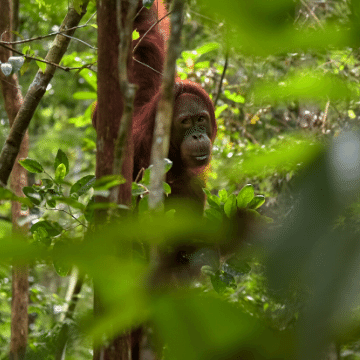
INDONESIA LIFE ON LAND PROJECT
Our experienced planters in Indonesia work to ensure that balance is restored both environmentally and economically by planting new trees. This project helps to create jobs, provide long-term income, and educate local villages about the importance of conservation. Requiring a four-hour boat ride through areas inhabited by Orangutans, Hornbills, Proboscis Monkeys, Crocodiles, and many other unique flora and fauna, reaching this remote area is an adventure in itself.
By establishing relationships with local farmer communities, Forest Management Units, and other authorities, we've increased the likelihood that tree planting will succeed in this region.
The threats of homicide, violence against children, human trafficking, and sexual violence cast a shadow over communities everywhere. To create inclusive societies and encourage sustainable development, we must first address these very real barriers. This means building effective, accountable institutions at all levels of society that are able to provide equitable justice for everyone.
To tackle these challenges and build a more peaceful, inclusive world, governments must establish comprehensive, realistic budgets and create more efficient, transparent regulations. One major step towards protecting individual rights will be to implement worldwide birth registration and create independent national human rights institutions everywhere.
THE IMPORTANCE OF PEACE, JUSTICE AND STRONG INSTITUTIONS
- Judiciary and Police are two of the institutions that are most affected by corruption.
- Approximately 28.5 million of the children aged from 4-11 that are not in school live in conflict-affected areas.
- Violence against children affects more than 1 billion children around the world, costing societies up to $ 7 trillion each year.
- Corruption, bribery, theft, and tax evasion cost developing countries an estimated $1.26 trillion dollars every year. This money would be better spent lifting those who are living on less than $1.25 a day out of extreme poverty for at least six years
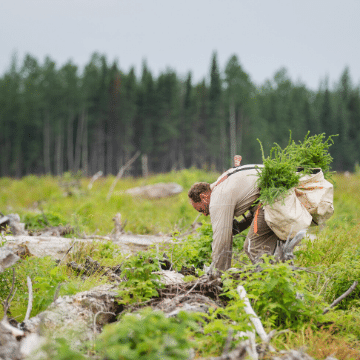
Urgent action is needed to mobilize, redirect, and unlock the transformative power of trillions of dollars in private resources to deliver on the sustainable development objectives. Long-term investments, including foreign direct investment, are needed in critical sectors—especially in developing countries. These range from sustainable energy, infrastructure, and transport to IT and communications technologies.
The public sector will need to set a clear direction. Review and monitoring frameworks, regulations, and incentive structures that enable such investments must be retooled to attract investors and reinforce sustainable development. National oversight mechanisms like supreme audit institutions and legislative oversight powers should be strengthened.
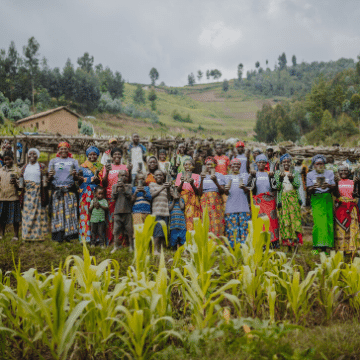
THE IMPORTANCE OF PARTNERSHIPS FOR THE GOALS
- Official development assistance stood at $146.6 billion in 2017. This represents a 0.6% decrease in real terms over 2016.
- The debt burden on developing countries remains stable at about 3% of export revenue.
- 79% of imports from developing countries enter developed countries duty-free
Content sourced from United Nations SDG
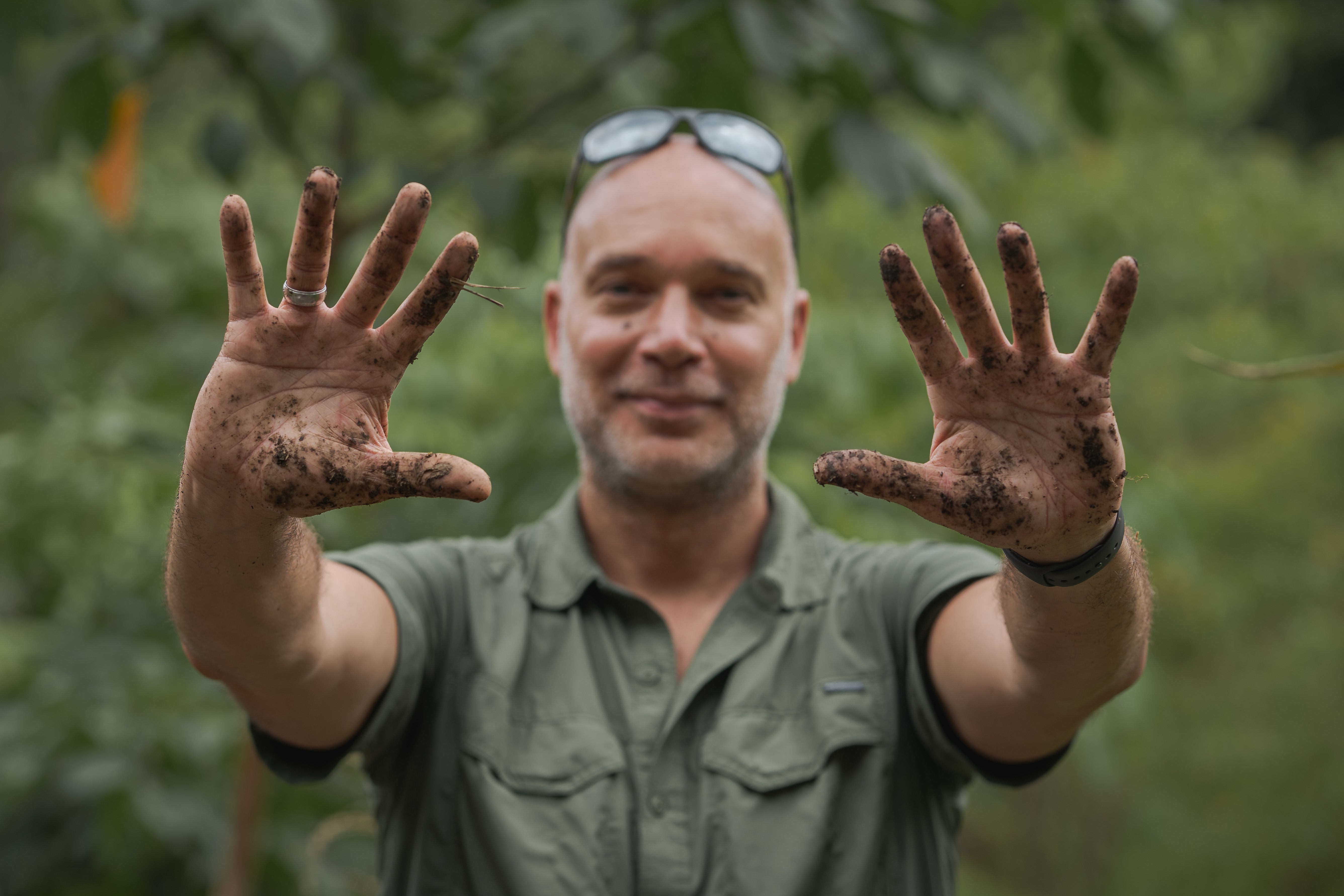
WANT TO MAKE YOUR BUSINESS MORE SUSTAINABLE?
CHECK OUT OUR GUIDE ON SIX SIMPLE WAYS TO MAKE YOUR BUSINESS MORE GREEN
DOWNLOAD THE GREEN GUIDE!
Meeting the U.N. Sustainable Development Goals (SDGs) is going to take a collaborative effort between government, civil society and industry.
As a business, you can make some simple changes to start on your path to more sustainable and environmentally responsible practices, doing your part to achieve the SDG targets.
Download our 'Going Green' guide and start today!
